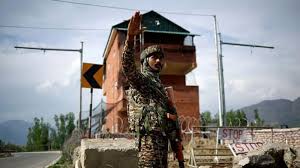Ministry of Defence moves to shrink time for procurement, replace trials with simulation

India’s Ministry of Defence (MoD) is moving to accelerate military procurement by replacing many traditional field trials with digital simulations. This reform aims to reduce the long delays that often prevent timely delivery of critical equipment to the armed forces.
This change could significantly reshape India’s defence acquisition system, known for being complex and time-consuming. The ministry hopes simulations will offer a faster, cost-effective way to test certain technologies — without sacrificing quality or safety.
Addressing Long-Standing Delays
India’s defence procurement process has long suffered from delays. In many cases, acquisition cycles can stretch over five to seven years. These delays lead to outdated or inadequate systems being delivered far too late.
To improve this, the MoD is revising the Defence Acquisition Procedure (DAP). Simulations will now replace physical trials in select categories, especially where risks are lower or performance can be reliably tested virtually.
For example, radar systems, communication tools, and software-based defence products may no longer need multi-stage physical field tests. Instead, they will go through approved simulation environments that meet high-performance standards.
Focus on Speed and Efficiency
Officials from the Ministry believe the shift will reduce timelines by 30–40% for applicable systems. Trials that once took months in varying terrains — from deserts to mountains — could now be completed virtually within weeks.
“Simulations have matured to the point where they replicate field conditions with high accuracy,” said a senior MoD official. “We’re aligning with international practices, ensuring faster, smarter decisions.”
Learning from Global Models
Several countries, including the US, UK, and Israel, already use simulations to evaluate defence systems. These tools test products in simulated battlefield scenarios, ensuring both efficiency and safety.
Experts in India believe the move is well-timed but caution that it must be executed carefully. Defence analyst Anil Wadhwa said, “Simulations are only as good as the data and algorithms they use. India must invest in reliable digital infrastructure to make this work.”
Vendor Requirements to Change
To support this transition, the MoD will require vendors to provide digital simulation models of their equipment. Indian firms may be asked to collaborate with simulation developers to meet new standards.
The Defence Research and Development Organisation (DRDO) and private sector tech companies will play key roles in creating these tools. DRDO is already developing a national defence simulation framework in partnership with leading IITs and private startups.
Industry leaders have welcomed the move but have also asked for clear technical guidelines. A representative of a major Indian defence manufacturer said, “We need clarity on how simulations will be approved and what standards will apply. But overall, it’s a step in the right direction.”
Boost for Make in India
Smaller companies and defence startups may benefit the most. Currently, field trials require major logistical effort and expense, which many startups cannot afford.
With simulations, entry barriers will be lower. This aligns with the government’s “Make in India” and “Atmanirbhar Bharat” missions to encourage self-reliance and domestic manufacturing in defence.
Retired Lt. Gen. D.S. Hooda noted, “This change helps level the playing field. More Indian firms can now compete, bringing fresh innovation into the sector.”
Not a Full Replacement
Not all physical trials will disappear. High-risk platforms — such as missiles, tanks, and aircraft — will still undergo physical tests. However, simulations will now play a bigger role in the overall evaluation process.
The MoD is updating its procurement policies and standard operating procedures to reflect these changes. A draft framework is expected soon, followed by consultations with industry and service branches.
Conclusion
India’s shift toward simulation-led defence procurement represents a major step in modernizing its armed forces. If implemented properly, it will save time, reduce costs, and enhance readiness in a volatile regional environment.
As technology evolves and warfare becomes increasingly digital, adopting faster and smarter evaluation tools is no longer optional — it is a strategic imperative.






